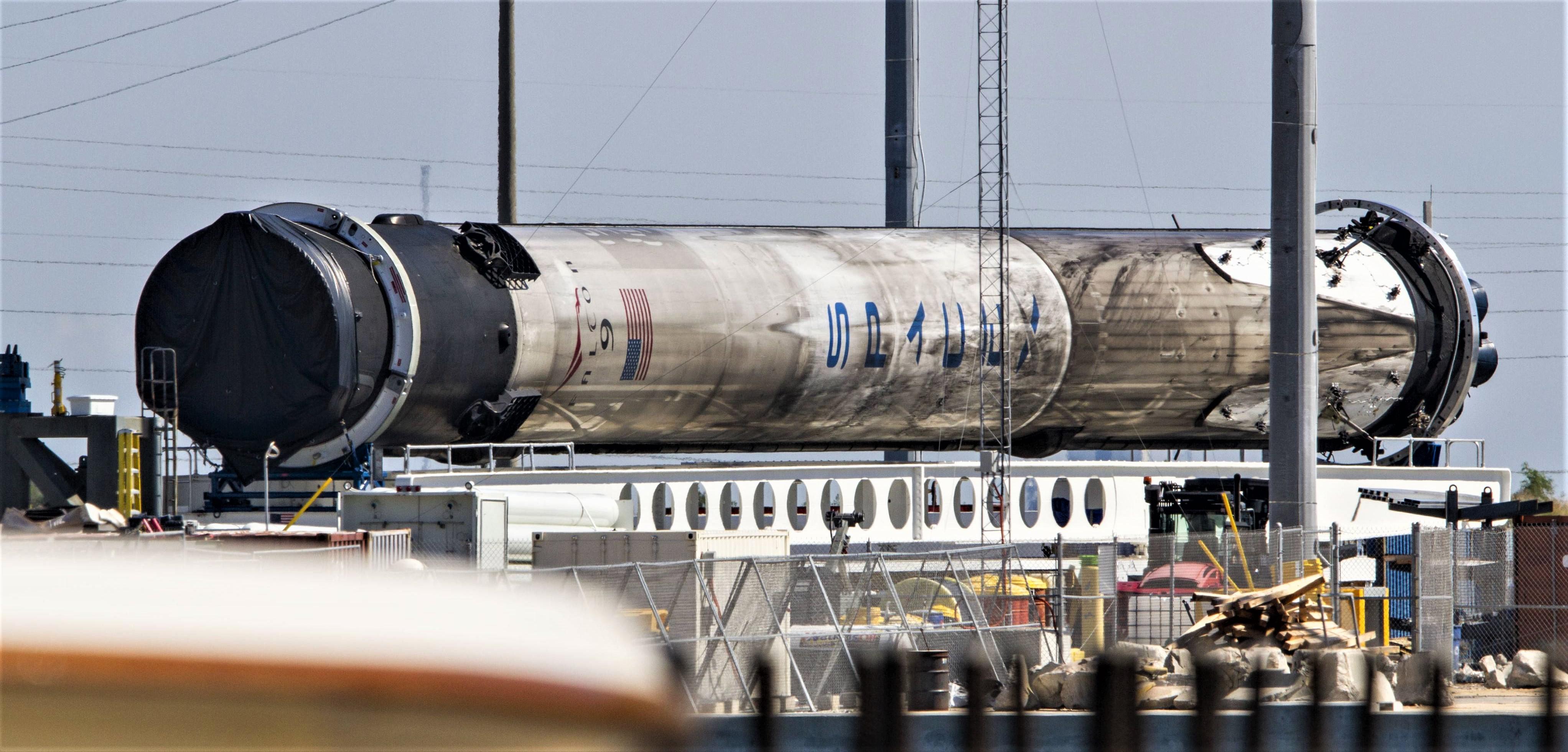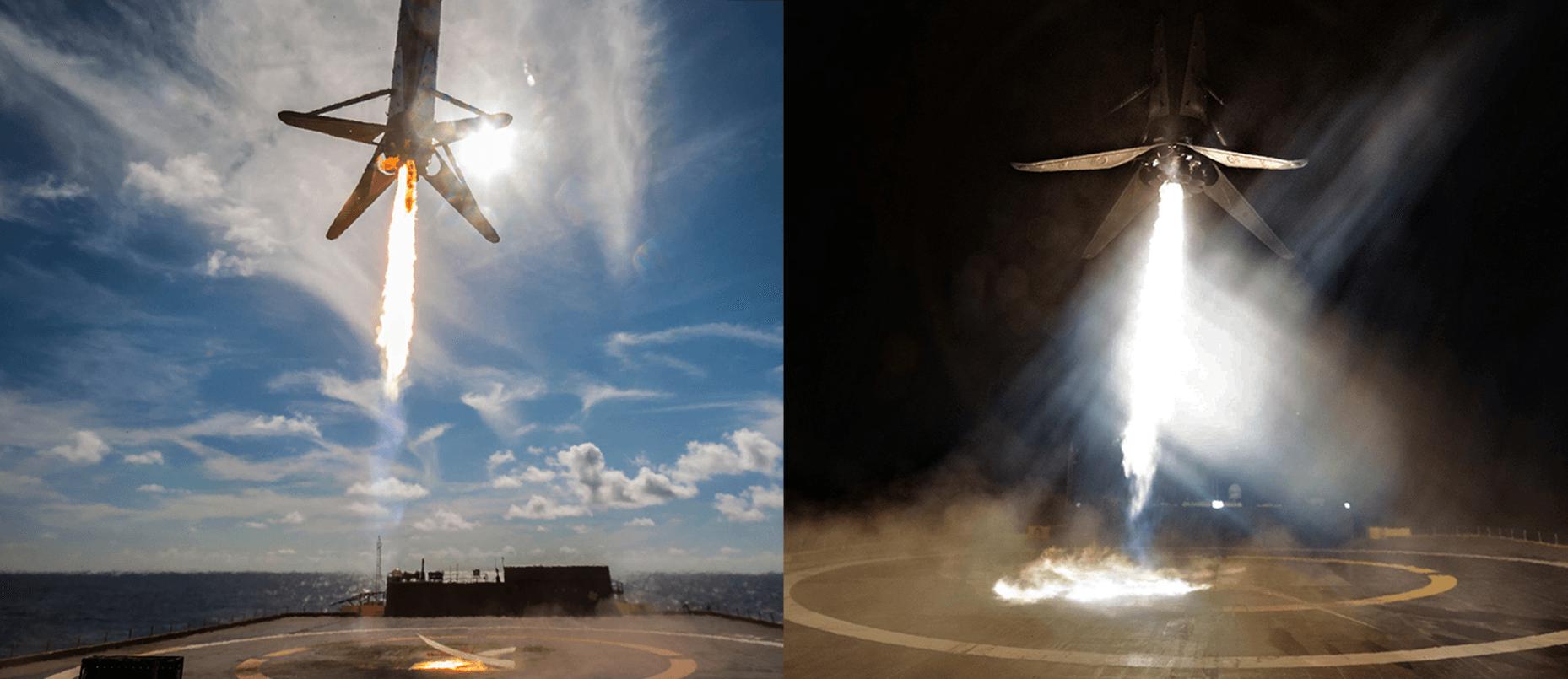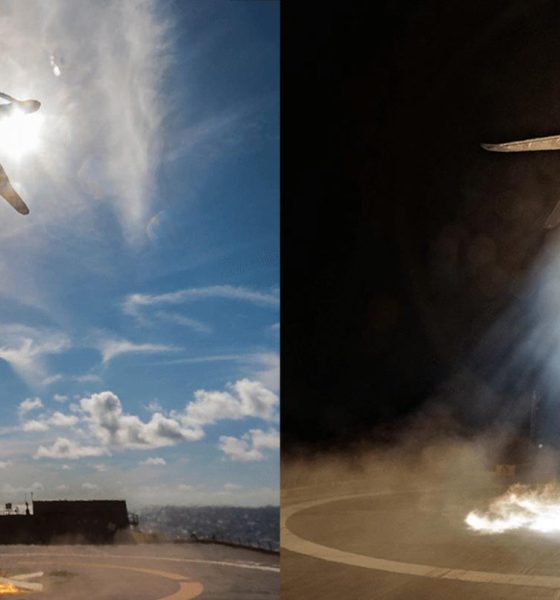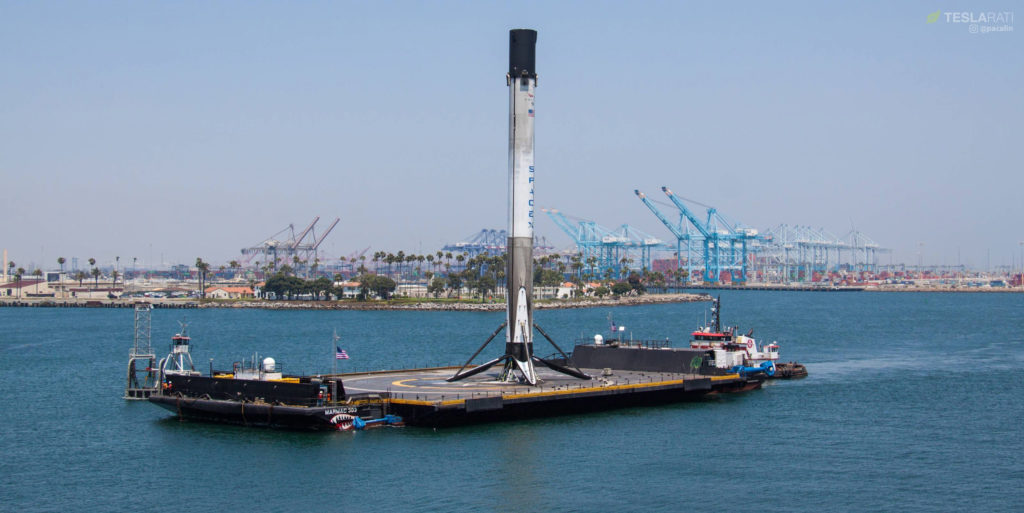Major SpaceX customer Iridium has set an official target date for its eighth and final Iridium NEXT launch, expected to fly on a flight-proven Falcon 9 Block 5 booster as early as December 30th.
With Iridium-8 now tentatively on SpaceX’s launch manifest, the company’s West Coast schedule appears to have stabilized with two more orbital missions before the end of 2018 – Spaceflight Industry’s SSO-A rideshare mission will aim for the second half of November while Iridium-8 will likely be the last global launch of 2018 if it sticks to its December 30 target.
It’s taken awhile, but finally have a schedule for the final launch #8 of Iridium NEXT! 8:38am pst on December 30th – we’ll have the satellites, SpaceX assures us the flight proven rocket will be ready, and VAFB is ready to ring in the New Year with us! #ThePartyWillBeEpic pic.twitter.com/vQPPeSKm0P
— Matt Desch (@IridiumBoss) October 18, 2018
Iridium CEO Matt Desch was happy to offer a few additional details after tweeting Iridium-8’s targeted launch date and confirmed that – despite original estimates to the contrary – the mission would launch on flight-proven Falcon 9 booster B1049.2. He also stated that the booster would attempt to land on SpaceX drone ship Just Read The Instructions after launch, passing up a Return-to-Launch-Site (RTLS) recovery at the freshly-coronated Landing Zone 4 (LZ-4) due to the significant weight and suboptimal trajectory of Iridium’s payload.
Barring unexpectedly heavy payloads, high-energy orbits, or new launch contracts, it’s probable that Iridium-8 will be the company’s last drone ship rocket recovery on the West Coast for at least a year, if not longer. The only unknown is whether SpaceX needs to or is able to launch during harbor seal pupping season, lasting from March to June – if that environmental concern can be sidestepped or altogether avoided, there may be no reason for Just Read The Instructions to remain in California when the drone ship could instead move to Florida and immediately facilitate faster launch cadence or support Falcon Heavy missions that could benefit from multiple booster landings at sea.
- B1048 returns to port on drone ship JRTI after its successful July 2019 launch debut. (Pauline Acalin)
- It’s second landing marked the debut of SpaceX’s LZ-4 landing zone. B1048 may be a prime candidate for SpaceX’s first triple booster reuse. (SpaceX)
According to CEO Elon Musk and other executives, SpaceX is already building a third autonomous spaceport drone ship (ASDS) for the same reasons, to be named A Shortfall of Gravitas (ASOG) upon completion. Earlier this summer, Musk stated that the new vessel could be completed as early as summer of 2019, although he has since also stated that the first full BFR launches may take place on a floating platform somewhere off the coast of the US, increasing the probability of SpaceX delaying ASOG’s construction to allow for future use as both a launch and landing platform.
Probably ships next summer
— Elon Musk (@elonmusk) July 28, 2018
Triple booster reuse on the horizon
Returning to SpaceX’s Q4 2018 Vandenberg launch manifest, its launch of Spaceflight Industry’s SSO-A rideshare mission is expected to occur sometime next month and will likely be SpaceX’s second-to-last launch before the year is out. Notably, SpaceX executive Hans Koenigsmann recently suggested that SSO-A may end up playing host to the company’s first attempt to launch the same Falcon 9 booster three times. All previous Falcon 9 reuses have been the rockets’ second launches and typically saw SpaceX expend the booster in the ocean rather than recover it and attempt refurbishment for a third launch.
Falcon 9 Block 5, however, included a huge number of upgrades to the rocket’s overall stamina and reusability, theoretically raising the number of potential flights per booster from 10-100. Examined generally, moving from two to three flights per booster may seem inconsequential. The reality, however, is that the first true confirmation of the success or failure of SpaceX’s Falcon 9 Block 5 upgrade will be whether a Block 5 booster is able to safely complete three missions and do so with relative ease.

As SpaceX technicians and engineers gradually gain confidence with the new rocket iteration, debuted less than six months ago, the focus will eventually move from cautiously methodical design validation to rapid booster turnaround, eventually culminating in something approximating the 24-hour first stage reuse Musk challenged his company to achieve before 2019 is out. Ultimately, the third launch of a single Falcon 9 Block 5 booster will be the biggest step yet towards SpaceX’s ultimate goal of rapidly and affordably reusable orbital-class rockets.
For prompt updates, on-the-ground perspectives, and unique glimpses of SpaceX’s rocket recovery fleet check out our brand new LaunchPad and LandingZone newsletters!

Elon Musk
Elon Musk’s Biggest Revelations on AI, Robots, and the Future of Work from the Moonshots Podcast

Elon Musk’s appearance on the Moonshots with Peter Diamandis podcast was packed with bold predictions, candid admissions, and surprising tech insights. The nearly three-hour conversation covered everything from artificial intelligence to humanoid robots, geopolitics, and the future of work. Here are the top 10 most intriguing takeaways:
-
Aggressive AGI Timeline Predictions
Musk offered a detailed view on when artificial general intelligence (AGI) could emerge, suggesting it may arrive sooner than many expect, emphasizing both transformative potential and risks.
-
U.S. vs. China in the AI Race
He discussed the strategic competition between the United States and China over AI development, noting that geopolitical dynamics will shape how and who leads in the next decades.
-
Future of Job Markets
Musk touched on how AI and automation could reshape employment, predicting massive boosts in productivity alongside potential disruptions in traditional work structures.
-
Clean Energy Transition
A recurring theme was the role of clean energy in future economies, with Musk reiterating the importance of scaling sustainable power generation and storage.
-
Humanoid Robots Are Coming
On the podcast, Musk elaborated on Tesla’s work on humanoid robots, hinting at timelines and applications that go beyond factories to general-purpose assistance.
-
Tesla Roadster “Last Human-Driven Car”
Outside the core discussion topics, Musk teased features of the upcoming Tesla Roadster — calling it “the best of the last of the human-driven cars” and suggesting safety won’t be its main selling point.
-
The Role of AI in Clean Energy and Robotics
Linking AI to both energy optimization and robotics, Musk explained how smarter systems could accelerate decarbonization and task automation across industries.
-
U.S. Innovation Leadership
Musk argued that maintaining American leadership in key tech sectors like AI, space, and robotics should be a national priority, with thoughtful policy and investment.
-
Job Creation vs. Job Elimination
While acknowledging automation’s disruptive effects, he also outlined scenarios where new industries and opportunities could emerge, particularly in AI, space, and advanced manufacturing.
-
Long-Term Vision for Humanity
Throughout the conversation, Musk revisited his long-term philosophical views — including a belief in humanity’s responsibility to become a multi-planetary and technologically empowered species.
Whether you agree with Musk’s optimism or not, the podcast offers a window into the thinking of one of the most influential figures in tech today, in and why his visions continue to spark debate and inspiration.
Elon Musk
Starlink achieves major milestones in 2025 progress report
Starlink wrapped up 2025 with impressive growth, adding more than 4.6 million new active customers and expanding service to 35 additional countries, territories, and markets.

Starlink wrapped up 2025 with impressive growth, adding more than 4.6 million new active customers and expanding service to 35 additional countries, territories, and markets. The company also completed deployment of its first-generation Direct to Cell constellation, launching over 650 satellites in just 18 months to enable cellular connectivity.
SpaceX highlighted Starlink’s impressive 2025 progress in an extensive report.
Key achievements from Starlink’s 2025 Progress
Starlink connected over 4.6 million new customers with high-speed internet while bringing service to 35 more regions worldwide in 2025. Starlink is now connecting 9.2 million people worldwide. The service achieved this just weeks after hitting its 8 million customer milestone.
Starlink is now available in 155 markets, including areas that are unreachable by traditional ISPs. As per SpaceX, Starlink has also provided over 21 million airline passengers and 20 million cruise passengers with reliable high-speed internet connectivity during their travels.
Starlink Direct to Cell
Starlink’s Direct to Cell constellation, more than 650 satellites strong, has already connected over 12 million people at least once, marking a breakthrough in global mobile coverage.
Starlink Direct to Cell is currently rolled out to 22 countries and 6 continents, with over 6 million monthly customers. Starlink Direct to Cell also has 27 MNO partners to date.
“This year, SpaceX completed deployment of the first generation of the Starlink Direct to Cell constellation, with more than 650 satellites launched to low-Earth orbit in just 18 months. Starlink Direct to Cell has connected more than 12 million people, and counting, at least once, providing life-saving connectivity when people need it most,” SpaceX wrote.
Elon Musk
Starlink passes 9 million active customers just weeks after hitting 8 million
The milestone highlights the accelerating growth of Starlink, which has now been adding over 20,000 new users per day.

SpaceX’s Starlink satellite internet service has continued its rapid global expansion, surpassing 9 million active customers just weeks after crossing the 8 million mark.
The milestone highlights the accelerating growth of Starlink, which has now been adding over 20,000 new users per day.
9 million customers
In a post on X, SpaceX stated that Starlink now serves over 9 million active users across 155 countries, territories, and markets. The company reached 8 million customers in early November, meaning it added roughly 1 million subscribers in under seven weeks, or about 21,275 new users on average per day.
“Starlink is connecting more than 9M active customers with high-speed internet across 155 countries, territories, and many other markets,” Starlink wrote in a post on its official X account. SpaceX President Gwynne Shotwell also celebrated the milestone on X. “A huge thank you to all of our customers and congrats to the Starlink team for such an incredible product,” she wrote.
That growth rate reflects both rising demand for broadband in underserved regions and Starlink’s expanding satellite constellation, which now includes more than 9,000 low-Earth-orbit satellites designed to deliver high-speed, low-latency internet worldwide.
Starlink’s momentum
Starlink’s momentum has been building up. SpaceX reported 4.6 million Starlink customers in December 2024, followed by 7 million by August 2025, and 8 million customers in November. Independent data also suggests Starlink usage is rising sharply, with Cloudflare reporting that global web traffic from Starlink users more than doubled in 2025, as noted in an Insider report.
Starlink’s momentum is increasingly tied to SpaceX’s broader financial outlook. Elon Musk has said the satellite network is “by far” the company’s largest revenue driver, and reports suggest SpaceX may be positioning itself for an initial public offering as soon as next year, with valuations estimated as high as $1.5 trillion. Musk has also suggested in the past that Starlink could have its own IPO in the future.












